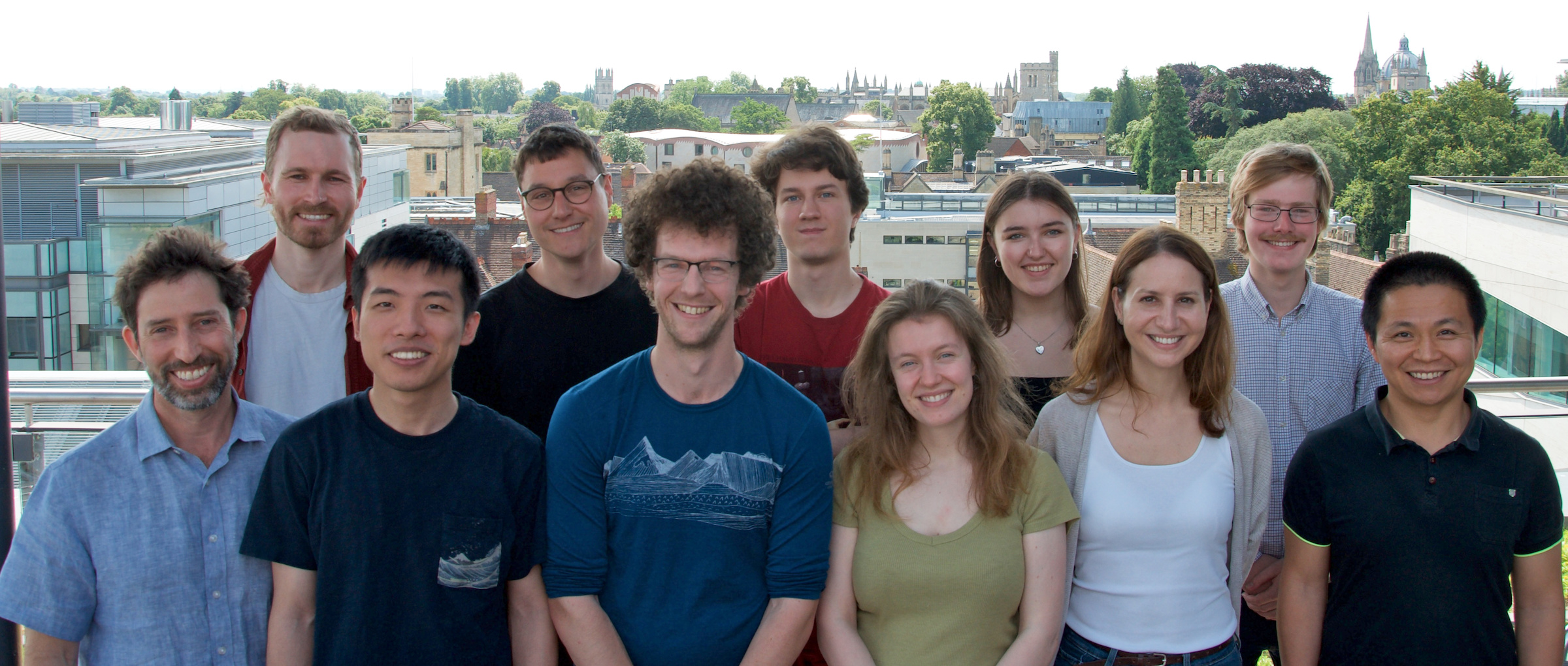The FoaLab is a group of researchers and students working together to elucidate geophysical and planetary processes involving fluid mechanics and phase changes. Our research interests include magma/mantle dynamics at plate-tectonic boundaries, the coupled dynamics of ice sheets and subglacial hydrology, and other problems in involving melting, freezing, and fluid flow. We use theoretical models, large-scale computation, (scaling) analysis, and field observations and data from the literature to understand the behaviour of the Earth. The FoaLab is lead by Richard Foa Katz, Professor of Geodynamics in the Department of Earth Sciences at the University of Oxford.
July 2024. Back row, from left: Calum Braham (PDRA), Tim Davis (PDRA), Murray Kiernan (REP student), Catherine Gower (MSc student), Andras Cserep (MSc student). Front row from left: Richard Katz (PI), Hanwen Zhang (PhD student), Hamish Hay (PDRA), Rhiannon Ackland (PhD student), Adina Pusok (Affiliated researcher, Roy Soc IRF). Not pictured: Luke Kearney (PhD student), Abraham Francis (MIORPA student). Photo by Charlie Rex.

The computational models that we develop leverage powerful software called the Portable, Extensible Toolkit for Scientific Computation (PETSc), which is developed at Argonne National Laboratory in Illinois. This general-use set of libraries allow us to rapidly develop flexible numerical solvers for coupled systems of non-linear partial differential equations. It facilitates the production of novel simulations that open a window on emergent behaviours in the complex, multi-physics problems posed by the Earth.
Our work is supported by research grants from a variety of sources. This funding goes toward our wages and our access to computational resources. It allow us to present our results at regional and international conferences, and to learn about research by other investigators. We also travel into the field, to become better acquainted with the systems that we study, although new field observations and measurements are generally not a part of our published work. Without the financial support of our sponsors, our work would not be possible.
In terms of people, our goal is to be as dynamic as the systems that we study. We are eager to collaborate, and to expand our membership to motivated, talented postdoctoral scholars and graduate students. Prospective students should consult the graduate admissions page for the Department of Earth Sciences. Funded positions will be announced on our Twitter feed. If you are interested in getting involved in our work and you have a background in physics and/or applied mathematics, please contact us about joining the FoaLab.
Porosity and mantle flow lines from a simulation of a mid-ocean ridge with a chemically heterogeneous mantle.

About our name The FoaLab is named after Professor Piero P. Foa (1911--2005), endocrinologist, physician, and maternal grandfather to Katz. Professor Foa fled fascist Italy in 1938, shortly after obtaining a lectureship at the University of Pavia. His career developed in the United States, with postdoctoral positions at Yale and the University of Michigan. As a professor at The Chicago Medical School and later at Wayne State University/Sinai Hospital in Detroit, Foa made fundamental discoveries about the mechanisms of Type I diabetes. Moreover, he was Katz's first scientific teacher and mentor in a prototype of the FoaLab, which was located in the basement of his house, at the dawn of the computer age. Although Prof. Foa's mindset was decidedly "analogue, not digital," his creativity, energy, and joy in the work of science remain an inspiration for Katz and the FoaLab.
